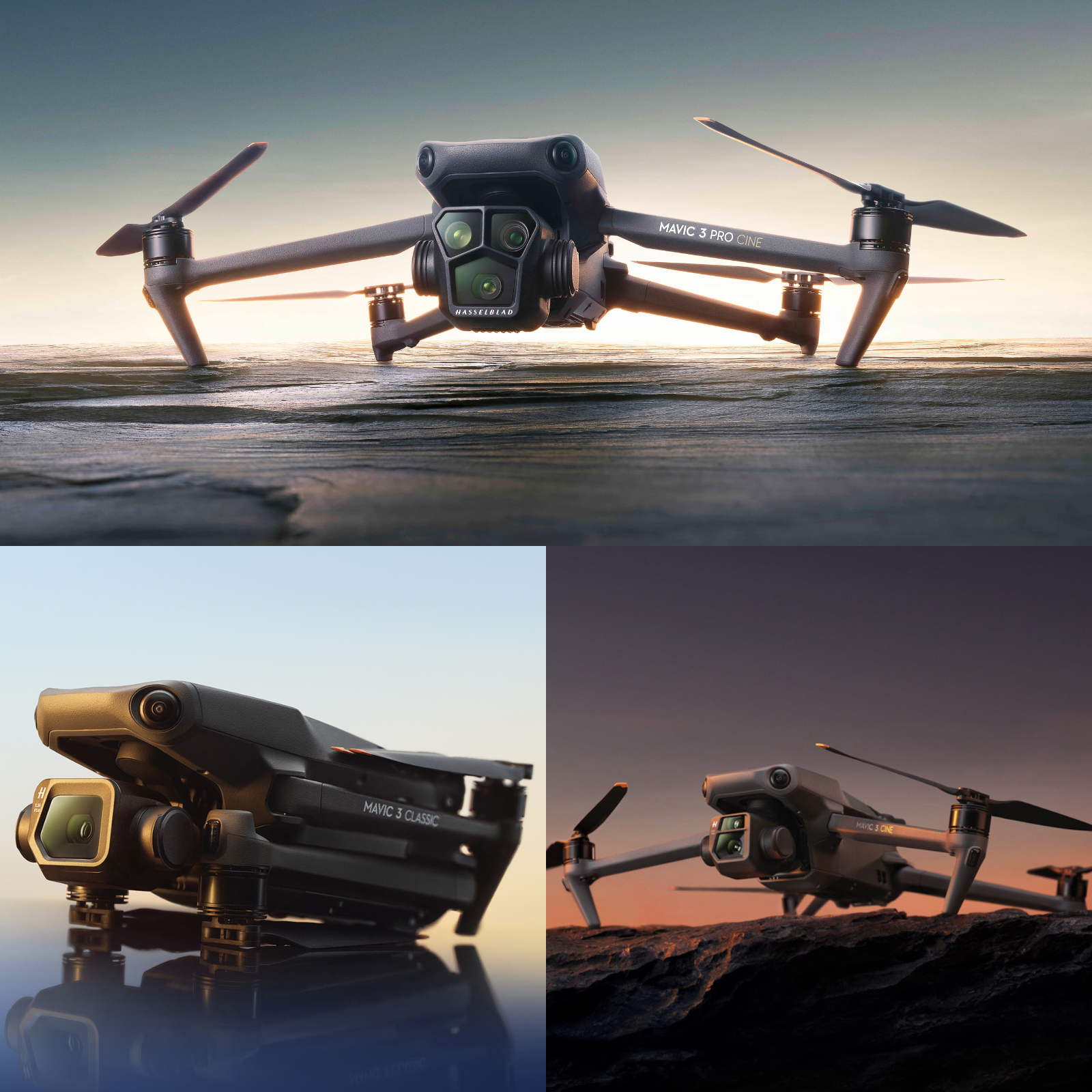
Products
Mavic 3 Pro Vs Mavic 3 Cine Vs Mavic 3 Classic
Which DJI Mavic 3 is best for your drone videography and photography? This comparison article explores the differences between the DJI Mavic 3 Pro, Mavic 3 Pro Cine, Mavic 3 Classic, Mavic 3, and Mavic 3 Cine. ... Read More
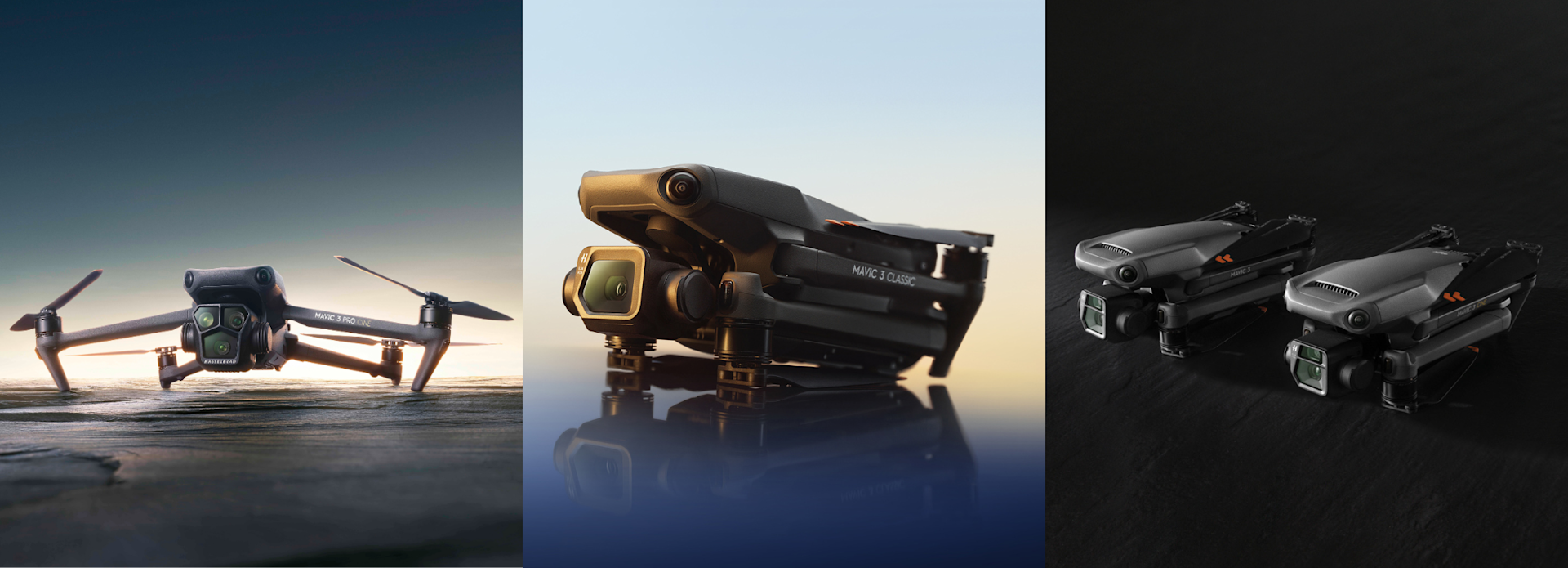
In-depth comparison between the DJI Mavic 3 Pro, DJI Mavic 3 Pro Cine, DJI Mavic 3 Classic, DJI Mavic 3, and DJI Mavic 3 Cine - all designed for aerial content creation;
All five drones have a quality 4/3 CMOS Hasselblad sensor;
Mavic 3 Pro and Mavic 3 Cine also feature dual Tele cameras, while Mavic 3 and Mavic 3 Cine have a single Tele camera;
DJI Mavic 3 Pro Cine and Mavic 3 Pro Cine - aimed at pro-filmmakers - support Apple ProRes and have 1TB built-in storage. The new Mavic 3 Pro Cine has tri-camera ProRes support, while ProRes is only supported on the Hasselblad camera of the older Mavic 3 Cine;
Mavic 3 Classic has a lower price - making it a more cost-effective, budget option.
DJI has upgraded its Mavic 3 range, releasing the DJI Mavic 3 Pro and Mavic 3 Pro Cine.
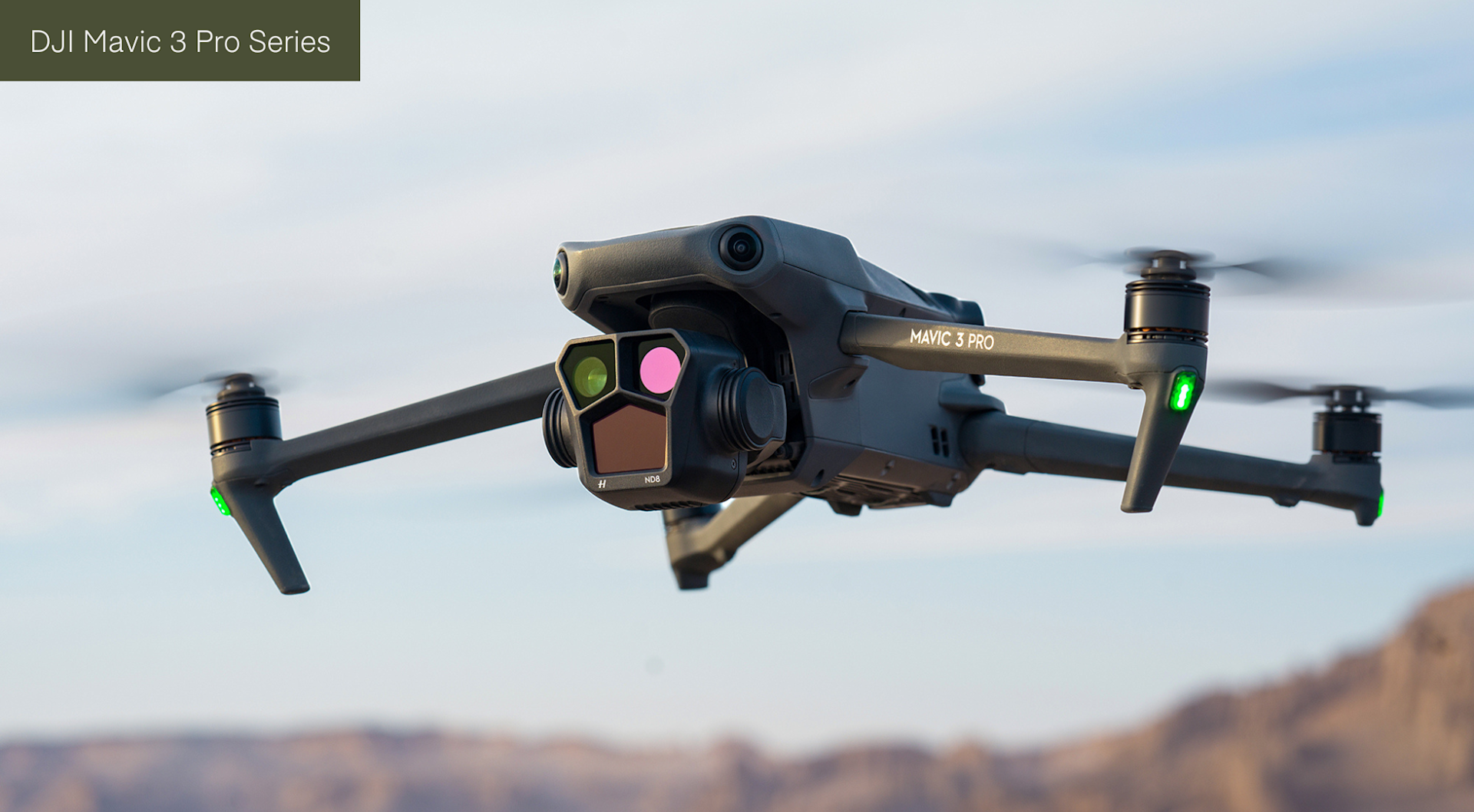
These two new content-creation drones follow the original Mavic 3 and Mavic 3 Cine - unveiled in November 2021 - and the Mavic 3 Classic, which arrived a year later.
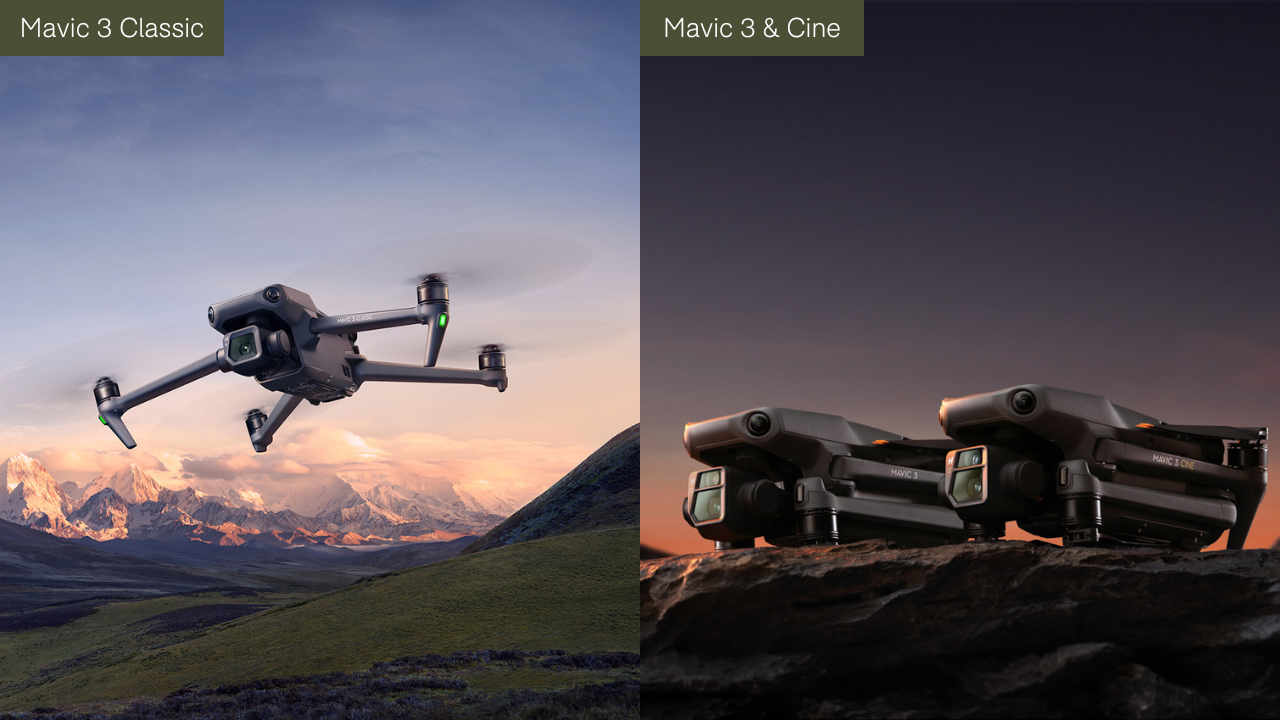
So, what's the difference between the five platforms, who are they aimed at, how do they impact your content creation, and what upgrades are packed into the new Mavic 3 Pro/Mavic 3 Pro Cine compared to the previous iterations? Find out in this comparison blog.
Mavic 3 Pro Vs Mavic 3 Pro Cine Vs Mavic 3 Classic Vs Mavic 3 Vs Mavic 3 Cine - Key Specs
The table below shows a quick, at-a-glance comparison between the Mavic 3 Pro, Mavic 3 Pro Cine, Mavic 3 Classic, Mavic 3, and Mavic 3 Cine.
Mavic 3 Pro & Mavic 3 Pro Cine | Mavic 3 Classic | Mavic 3 & Mavic 3 Cine | |
Take-off Weight | Mavic 3 Pro: 958g Mavic 3 Pro Cine: 963g | 895g | Mavic 3: 895g Mavic 3 Cine: 899g |
Dimensions (L x W x H) | Folded (without propellers): 231.1 x 98 x 95.4 mm; Unfolded (without propellers): 347.5 x 290.8 x 107.7 mm | Folded (without propellers): 221 x 96.3 x90.3 mm; Unfolded (without propellers): 347.5 x 283 x 107.7 mm | Folded (without propellers): 221 x 96.3 x 90.3 mm; Unfolded (without propellers) 347.5 x 283 x 107.7 mm |
Hasselblad Camera | 4/3 CMOS, Effective pixels: 20 MP | 4/3 CMOS, Effective pixels: 20 MP | 4/3 CMOS, Effective pixels: 20 MP |
Tele Camera | 1/2-inch CMOS, up to 28x hybrid zoom 1/1.3-inch, up to 3x optical zoom | No | 1/2-inch CMOS, up to 28x hybrid zoom |
Apple ProRes | Mavic 3 Pro: No Mavic 3 Pro Cine: Apple ProRes 422 HQ, Apple ProRes 422, Apple ProRes 422 LT Mavic 3 Pro Cine has tri-camera Apple ProRes support. | No | Mavic 3: No Mavic 3 Cine: Apple ProRes 422 HQ, Apple ProRes 422, Apple ProRes 422 LT Mavic 3 Cine supports Apple ProRes on the Hasselblad camera. |
Video Resolution | Hasselblad Camera: 5.1K @ 50fps DCI 4K @ 120fps for HD slow-motion videos Dual Tele Cameras: 4K @ 60fps | Hasselblad Camera: 5.1K @ 50 fps DCI 4K @ 120 fps for HD slow-motion videos | Hasselblad Camera: 5.1K @ 50 fps DCI 4K @ 120 fps for HD slow-motion videos Single Tele Camera: 4K @ 50fps |
Max Flight Time | 43 minutes | 46 minutes | 46 minutes |
Operating Temperature | -10°C to 40°C | -10°C to 40°C | -10°C to 40°C |
Obstacle Sensing | Omnidirectional | Omnidirectional | Omnidirectional |
Video Transmission System | O3+ | O3+ | O3+ |
Transmission Distance (CE) | 8 km | 8 km | 8 km |
Internal Storage | Mavic 3 Pro: 8 GB Mavic 3 Pro Cine: 1 TB | 8 GB | Mavic 3: 8 GB Mavic 3 Cine: 1 TB |
Flight App | DJI Fly | DJI Fly | DJI Fly |
DJI Mavic 3 Pro & Mavic 3 Pro Cine Vs Mavic 3 Classic Vs Mavic 3 & Mavic 3 Cine - Camera
All of the Mavic 3 platforms are quality content-creation drones, sharing key features such as the 4/3 CMOS Hasselblad sensor for 20MP imaging, and ability to shoot 5.1K/50fps video and epic 4K/120fps slow-motion.
Engineered for quality content creation and utilising that Hasselblad sensor, all of the Mavic 3 drones have:
12.8 stops of native dynamic range;
f/2.8-f/11 adjustable aperture;
24mm equivalent focal length;
Hasselblad Native Colour Solution (HNCS): Delivers vivid natural colours;
10-bit D-Log: Provides more natural colour gradations for greater flexibility in post-production. Mavic 3 Pro/Mavic 3 Pro Cine support the new 10-bit D-Log M colour mode. A firmware update has added D-Log M colour mode for the Hasselblad camera for the Mavic 3 Classic and Mavic 3/Mavic 3 Cine.
HLG: Provides higher dynamic range, capturing footage that does not require colour tuning in post-production;
Night Mode: This video mode optimises footage in low-light scenarios such as sunsets and sunrises, reducing noise for cleaner shots.
However, there are some key differences.
The Mavic 3 Pro and Mavic 3 Pro Cine have three cameras: That Hasselblad sensor, as well as Dual Tele Cameras.
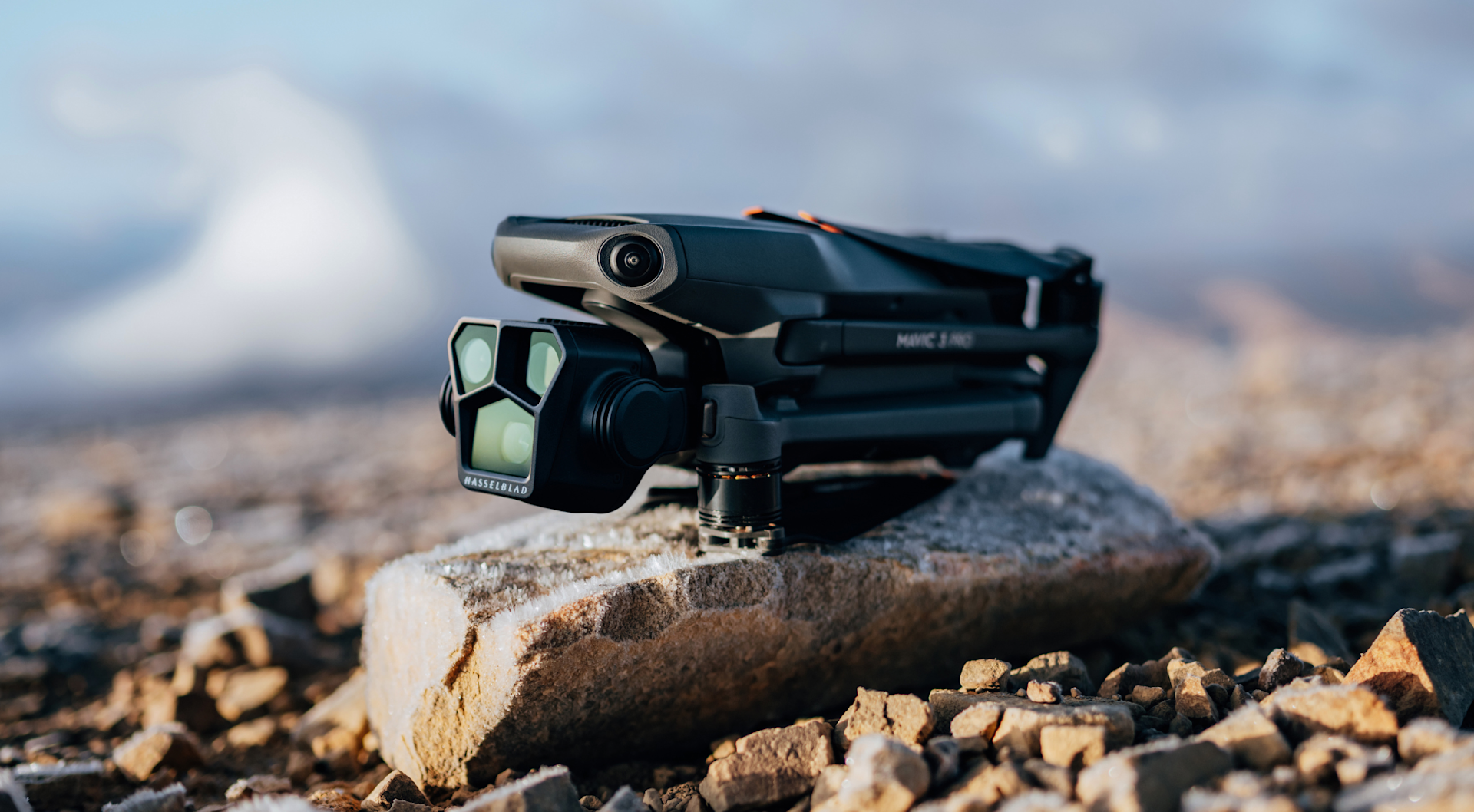
In contrast, the original Mavic 3 and Mavic 3 Cine have two cameras - the Hasselblad camera, as well as one Tele Camera. The Mavic 3 Classic only has the Hasselblad sensor (which has a 3x zoom).
So, let's look at the Tele Cameras.
The key specifications of the Dual Tele Cameras on the Mavic 3 Pro and Mavic 3 Pro Cine are:
Medium Tele Camera: 70mm, 3x optical zoom, f/2.8, 48MP, 4K/60fps.
Tele Camera: 166mm, 7x optical zoom, 28x hybrid zoom, f/3.4, 12MP, 4K/60fps.
This is compared to the single Tele Camera on the Mavic 3 and Mavic 3 Cine which offers these specs: 162mm telephoto lens, aperture of f/4.4, up to 28x hybrid zoom, 12MP stills, and 4K/50fps video.
The Medium Tele Camera on the Mavic 3 Pro and Mavic 3 Pro Cine supports HLG/D-Log M, while the single Tele Camera on the original Mavic 3 and Mavic 3 Series, does not.
The Mavic 3 Pro/Mavic 3 Pro Cine's 166mm Tele Camera is upgraded from the Tele Camera on the Mavic 3 and Mavic 3 Cine, with a wider aperture.
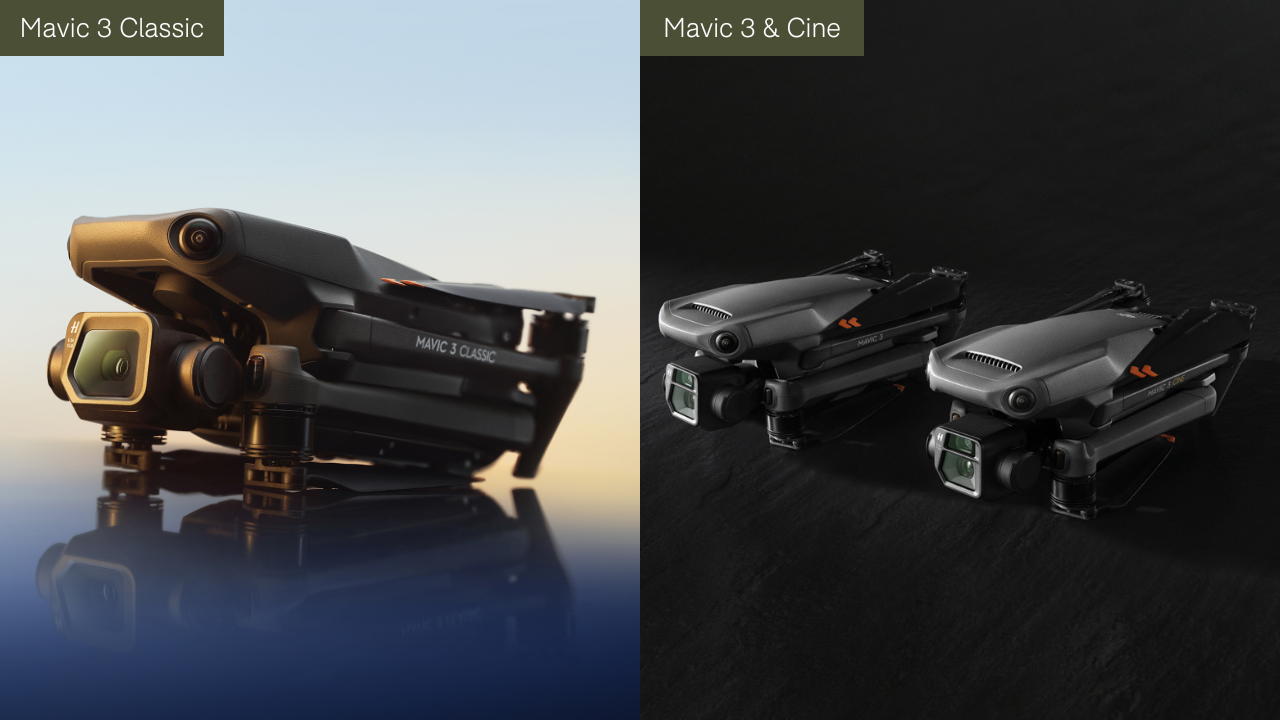
Another key difference between all of the drones is that the Mavic 3 Cine and Mavic 3 Pro Cine use Apple ProRes - the industry standard for high-quality video and one of the best practical HD formats available for cinematography.
Both support Apple ProRes 422 HQ, Apple ProRes 422, Apple ProRes 422 LT.
However, an important note is that Apple ProRes is supported across all three cameras on the Mavic 3 Pro Cine, whereas these codecs can only be used on content captured with the Hasselblad camera on the Mavic 3 Cine, and not the Tele camera.
Both the Mavic 3 Pro Cine and Mavic 3 Cine have an internal 1TB SSD to cater for these larger Apple ProRes files. A microSD card can also be inserted for additional capacity.
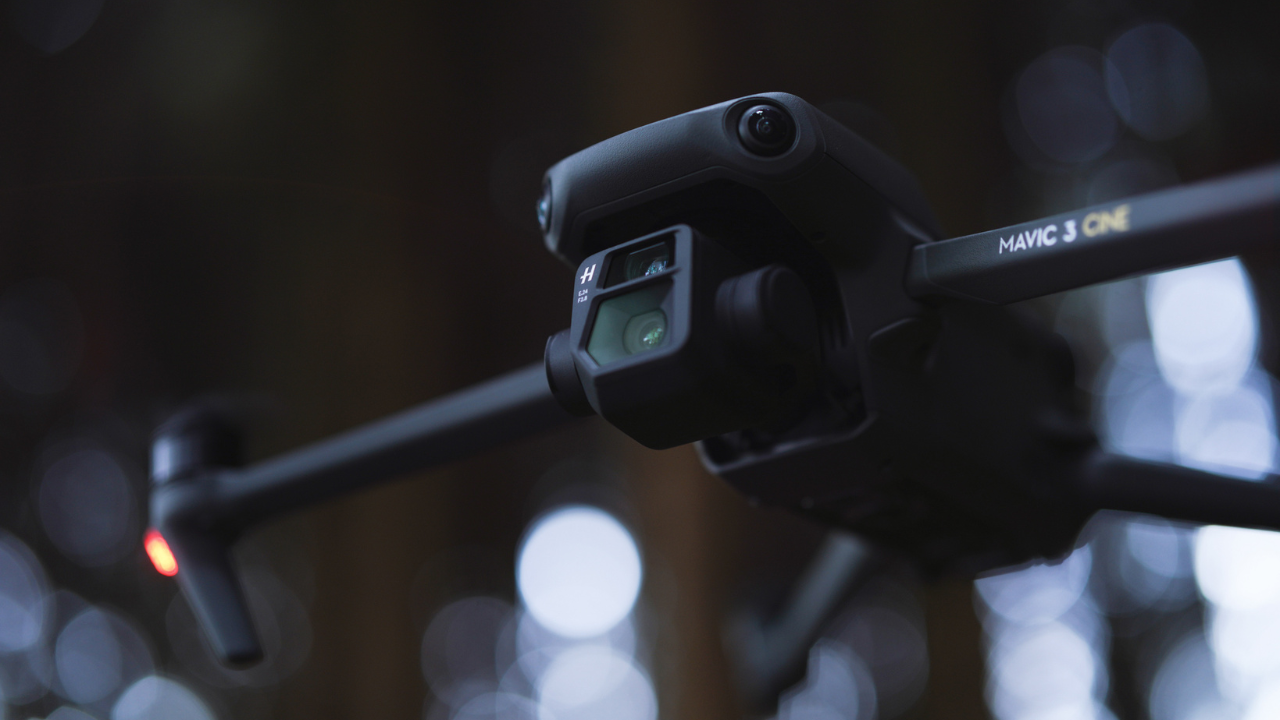
In contrast, the Mavic 3 Pro, Mavic 3 and Mavic 3 Classic have 8GB of onboard storage, plus capacity for a microSD card. They do not use Apple ProRes, instead utilising H.264 and H.265 encoders. Incidentally, the H.264 and H.265 video formats can be used on the Mavic 3 Pro Cine and Mavic 3 Cine.
Design
The Mavic 3 Series are lightweight and foldable drones.
The Mavic 3/Mavic 3 Cine, and Mavic 3 Classic have the same dimensions...
Folded - without propellers (L x W x H): 221 x 96.3 x 90.3mm
Unfolded - without propellers (L x W x H): 347.5 x 283 x 107.7mm
...while the Mavic 3 Pro and Mavic 3 Pro Cine are slightly larger, but only just:
Folded - without propellers (L x W x H): 231 x 98 x 95.4mm
Unfolded - without propellers (L x W x H): 347.5 x 290.8 x 107.7mm
The Mavic 3 Classic and Mavic 3 weigh 895g, while the Mavic 3 Cine comes in at 899g.
The Mavic 3 Pro tips the scales at 958g, and the Mavic 3 Pro Cine weighs 963g.
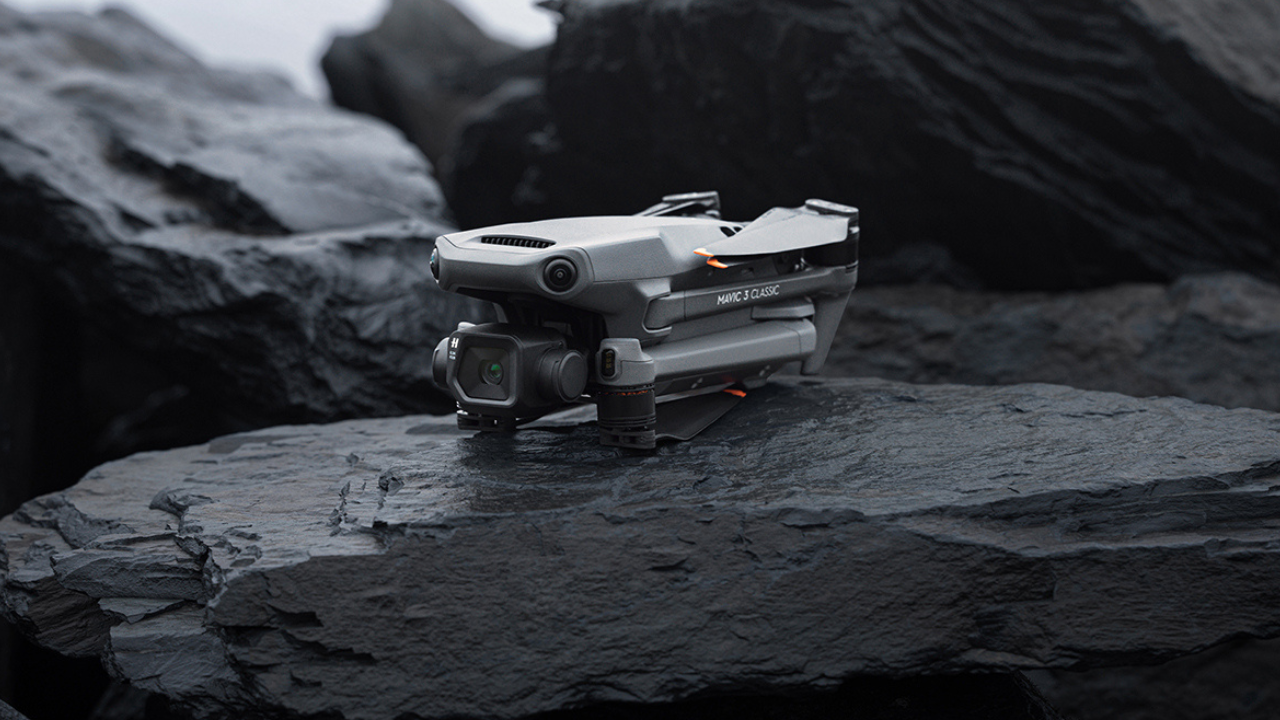
It makes the Mavic 3 Series extremely portable - perfect for capturing quality content on the go.
Being from the same family, the Mavic 3 Series look practically identical - albeit their cameras are all different.
The drones are furnished with a suite of safety sensors, and an auxiliary bottom light, while the removable battery is located at the rear of the aircraft.
Flight Performance - Battery Life, Transmission, Safety Features, Smart Shooting Modes
All of the Mavic 3 drones are top performers, with excellent battery life, enhanced transmission, and omnidirectional obstacle sensing.
The table below shows some of drones' key flight performance features.
All apply to Mavic 3 Pro, Mavic 3 Pro Cine, Mavic 3 Classic, Mavic 3 and Mavic 3 Cine, unless stated | |
Max Ascent Speed | 8m/s |
Max Descent Speed | 6m/s |
Max Takeoff Altitude | 6000m |
Max Flight Time | 46 minutes 43 minutes (Mavic 3 Pro/Mavic 3 Pro Cine) |
Max Hovering Time | 40 minutes 37 minutes (Mavic 3 Pro/Mavic 3 Pro Cine) |
Battery - Type | Li-ion 4S |
Battery - Capacity | 5000 mAh |
Battery - Weight | 335.5 g |
Max Wind Speed Resistance | 12 m/s |
Operating Temperature | -10°C to 40°C |
Video Transmission System | O3+ |
Live View Quality | Remote Controller: 1080p/30fps,1080p/60fps |
Max Transmission Distance (CE) | 8km |
Video Transmission - Max Download Bitrate | O3+: 5.5 MB/s (with RC-N1 remote controller) 15 MB/s (with DJI RC Pro) 5.5 MB/s (with DJI RC) Wi-Fi 6: 80 MB/s* |
Safety Features
The Mavic 3 Series features a suite of safety features. These include:
Safety Feature | Function |
Advanced Return To Home | This updated auto-return function enables Mavic 3 Series to automatically determine the optimal route back to its home point and execute it quickly. |
APAS 5.0 | When flying, Mavic 3 Series continually senses objects in all directions and bypasses them quickly and smoothly. |
Vision Systems | Sensing Type: Omnidirectional binocular vision system, supplemented with an infrared sensor at the bottom of the aircraft. Forward, Backward, Lateral, Upward, Downward. |
While not strictly a safety feature like the others, the Mavic 3 Series is able to perform cruise control. This enables operators to fly the drone in any direction without having to continually press the control sticks - which not only makes long-distance flight more effortless, but also helps reduce shakes during manual control for smoother camera movement.
Cruise control has been made available via firmware updates. Find out more by clicking Mavic 3/Mavic 3 Cine firmware updates or by clicking Mavic 3 Classic firmware updates.
Smart Shooting Modes
The Mavic 3 Pro/Mavic 3 Pro Cine, Mavic 3 Classic, and Mavic 3/Mavic 3 Cine utilise the DJI Fly app and share a suite of smart shooting modes to streamline quality content creation. These are:
Smart Shooting Mode | Function |
ActiveTrack 5.0 | Track the subject from different directions for extensive camera language. |
Waypoint Flight | The drone automatically plans a flight route based on the user's pre-set waypoints and can precisely repeat routes. |
MasterShots | Automated shooting and editing to create cinematic footage. |
QuickShots | Automatically perform professional camera movements like Dronie, Rocket, Circle, and Helix. |
Hyperlapse | Stunning footage that captures and accelerates the passing of time. |
Panorama | Capture larger, more detailed shots of your surroundings with panorama. |
High-Speed QuickTransfer | Photos and videos can be transferred quickly to a smartphone for editing or sharing. |
Controllers
The Mavic 3 Series is compatible with three controllers - the DJI RC, DJI RC Pro, and the DJI RC-N1.
So, what is the difference between these controllers, and which one is best for you?
In a nutshell, the DJI RC and DJI RC Pro are smart controllers with built-in screens...
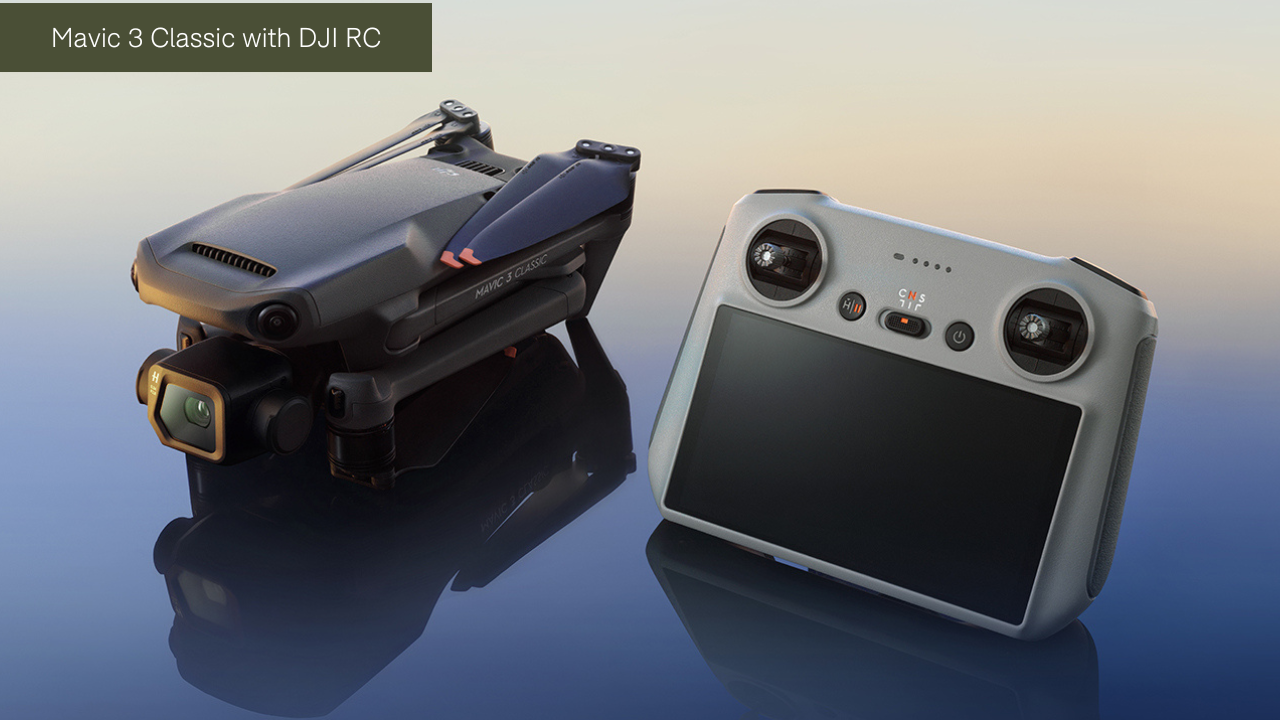
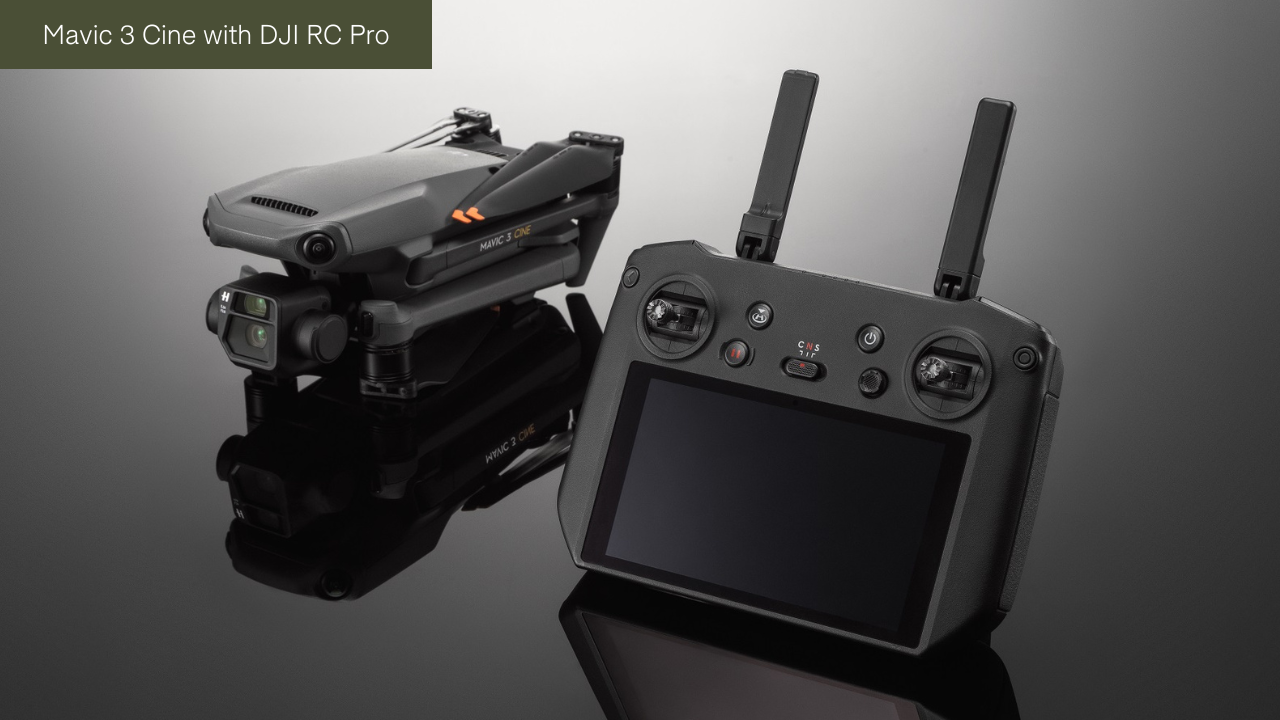
...whereas the DJI RC-N1 requires pilots to connect a separate mobile device.
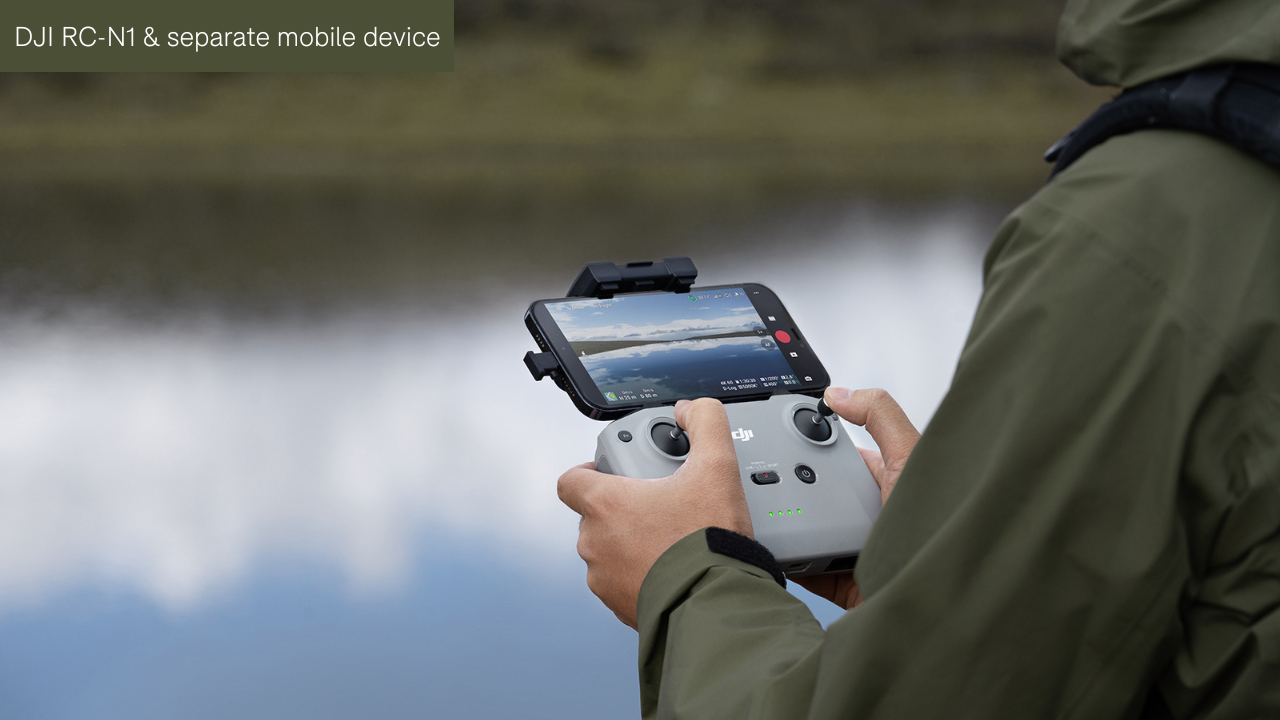
Benefits of using the smart controllers include: Ultra-bright screen for crisp viewing even under direct sunlight; easy setup and quick start; and no need for pilots to worry about interference from calls or text messages during flight.
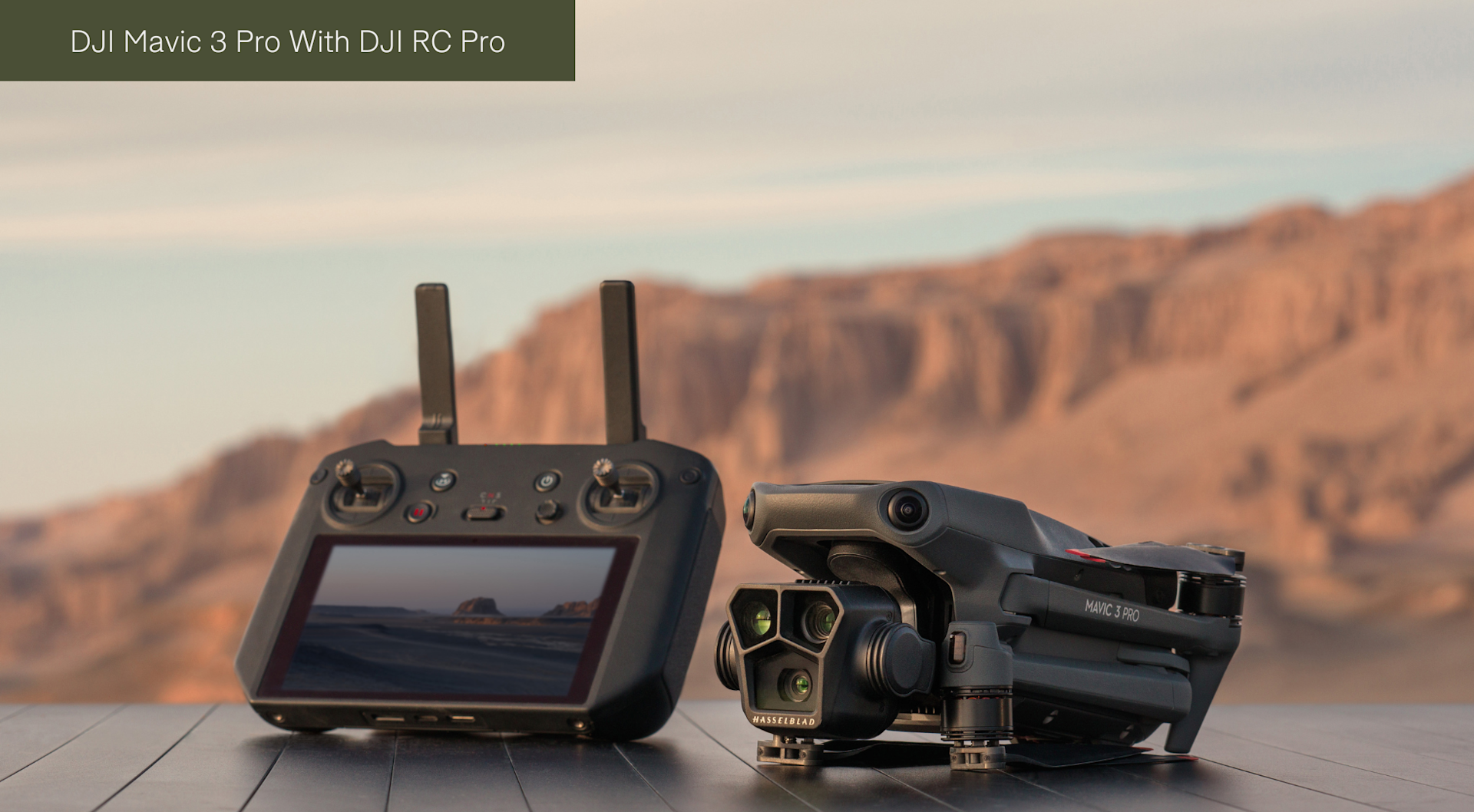
But whether this matters comes down to preference, and the DJI RC-N1 - which is still a popular controller - may well fit the bill.
The table below provides some key specs of each controller, including the differences between the DJI RC Pro and DJI RC smart controllers. For a more in-depth comparison, read the DJI RC Pro vs DJI RC vs DJI RC-N1 blog.
DJI RC Pro | DJI RC | DJI RC-N1 | |
Built-in Screen | Yes | Yes | No |
Screen Brightness and Resolution | 1,000 cd/m² 1920 x 1080 resolution | 700 cd/m² 1920 x 1080 resolution | Depends on the mobile device. |
Screen Size | 5.5 inches | 5.5 inches | Supports devices up to 180mm (L) x 86mm (W) x 10mm (H). Also compatible with tablet holder. |
Weight | 680 g | 390 g | 387 g (not including mobile device) |
Battery Life | 3 hours | 4 hours | 6 hours (without charging any mobile device) 4 hours (when charging a mobile device) |
OcuSync Transmission System | O3+ with Mavic 3 Series | O3+ with Mavic 3 Series | O3+ with Mavic 3 Series |
Transmission Distance (CE) | Up to 8km | Up to 8km | Up to 8km |
Antennas | 4 | 2 | 2 |
For a more immersive experience, all five of the Mavic 3 drones are compatible with the DJI Goggles Integra and DJI Goggles 2, as well as the DJI RC Motion 2 which allows operators to control the drone with wrist movements.
Mavic 3 Pro & Mavic 3 Pro Cine vs Mavic 3 Classic vs Mavic 3 & Mavic 3 Cine - Target Audience
The target audience between the Mavic 3 Pro and Cine, Mavic 3 Classic, and Mavic 3 and Cine is different.
First off, following the release of the Mavic 3 Pro and Mavic 3 Pro Cine, it feels as though these drones will replace the original Mavic 3 and Mavic 3 Cine in the Mavic 3 ecosystem - as essentially, they are the same drones, but the Pro versions have the upgraded camera system.
So, if we take the original Mavic 3s out of the mix, it means that the Mavic 3 Pro and the Mavic 3 Classic are arguably best-suited to tech-savvy amateur or semi-pro content creators who want to benefit from the latest tech and raise the bar of their aerial photography or filmmaking.
And with the Mavic 3 Classic having the lowest price point, this feels the best budget option - if users are willing to sacrifice the Tele camera.
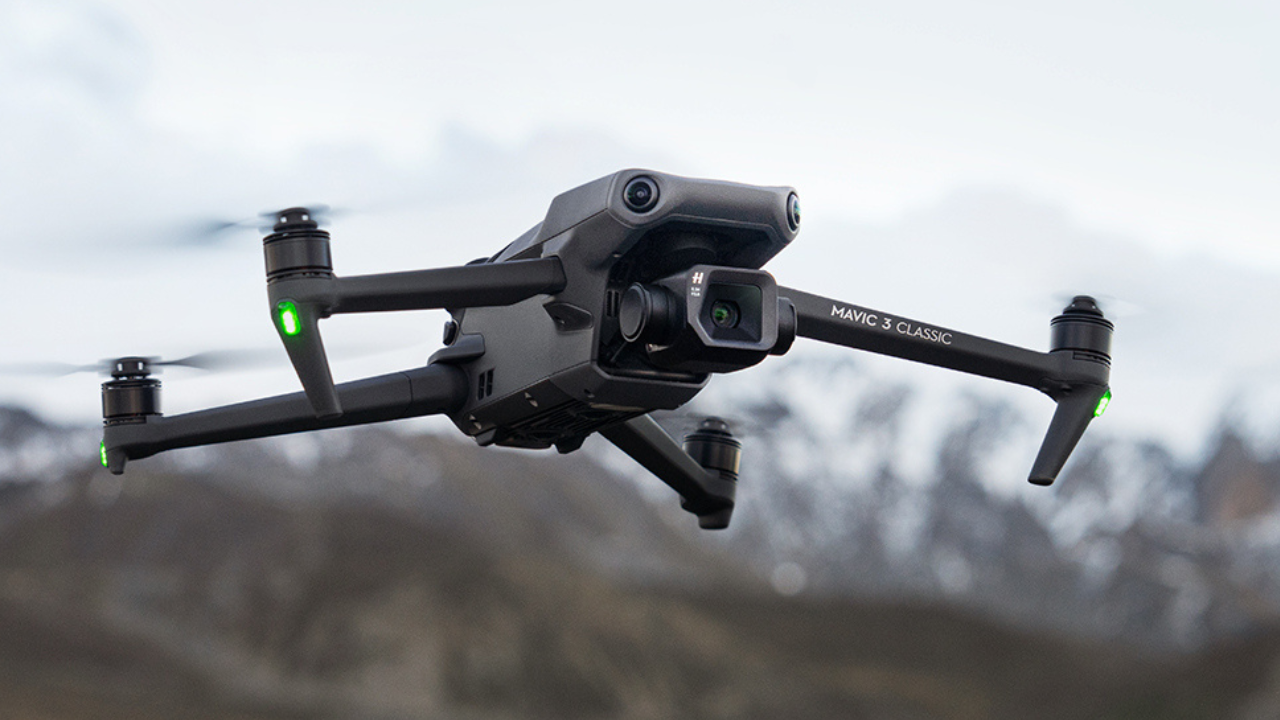
On the other side of the coin, the Mavic 3 Pro Cine is geared to a different crowd.
With its heftier price tag, support for Apple ProRes and internal 1TB SSD, plus the fact it comes with the DJI RC Pro as standard, the Cine's target market is very much professional filmmakers and production houses, for high-end, top-level content creation.
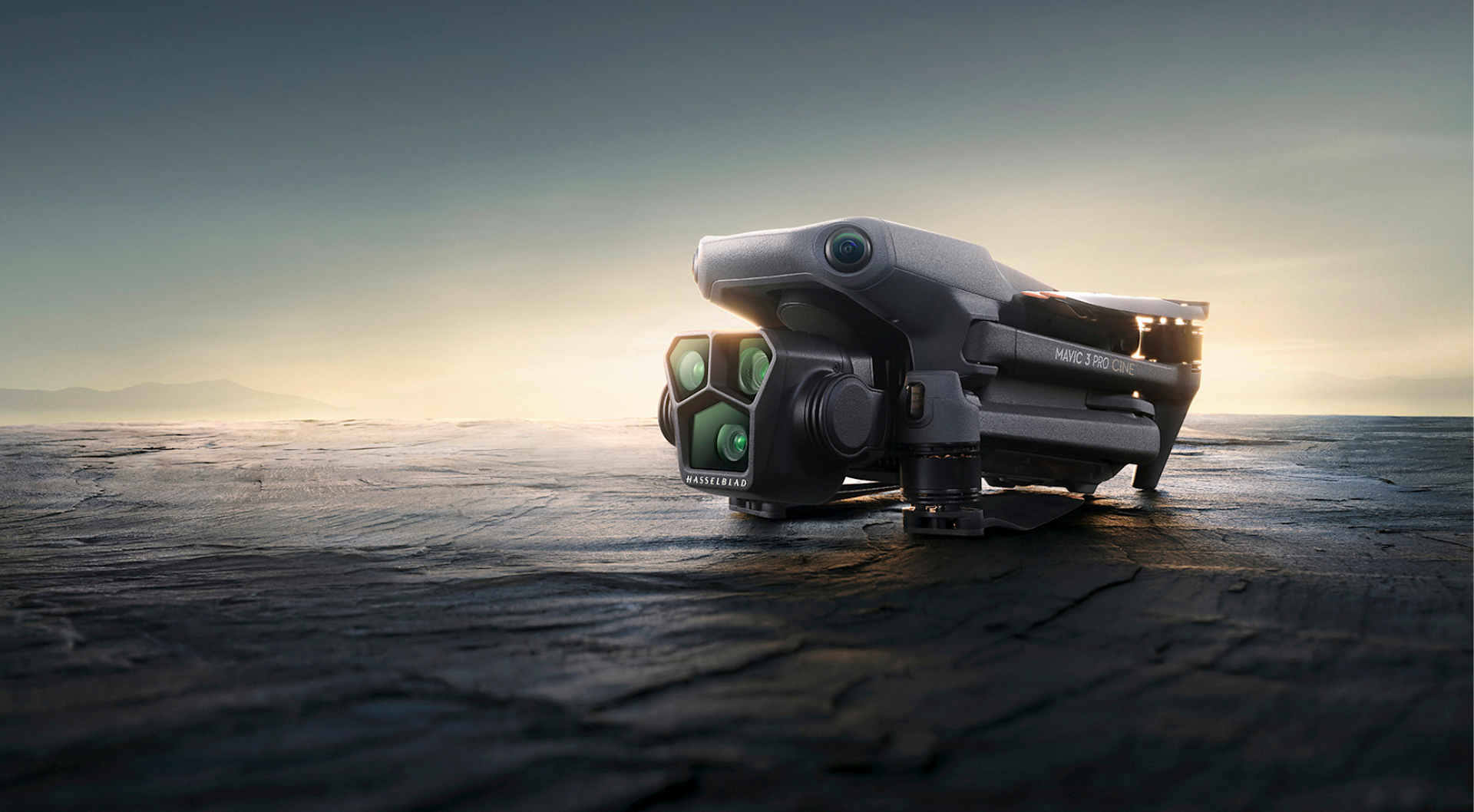
DJI Mavic 3 Pro & Mavic 3 Pro Cine Vs Mavic 3 Classic Vs Mavic 3 & Mavic 3 Cine - Summary
All of the Mavic 3 drones are amazing content-creation tools, sharing some incredible specs.
But the launch of the Mavic 3 Pro/Mavic 3 Pro Cine has once again upped the game, thanks to its innovative three-camera array - and in doing so, most likely replaces the original Mavic 3/Mavic 3 Cine.
With this in mind, the Mavic 3 Pro is a quality drone for operators who are serious about their aerial content, while the Mavic 3 Pro Cine ramps this up further and puts it into the attention of professional filmmakers.
In contrast, the Mavic 3 Classic still maintains its place as the budget Mavic 3 option, becoming a very attractive option for recreational or semi-pro photography and filmmaking.
